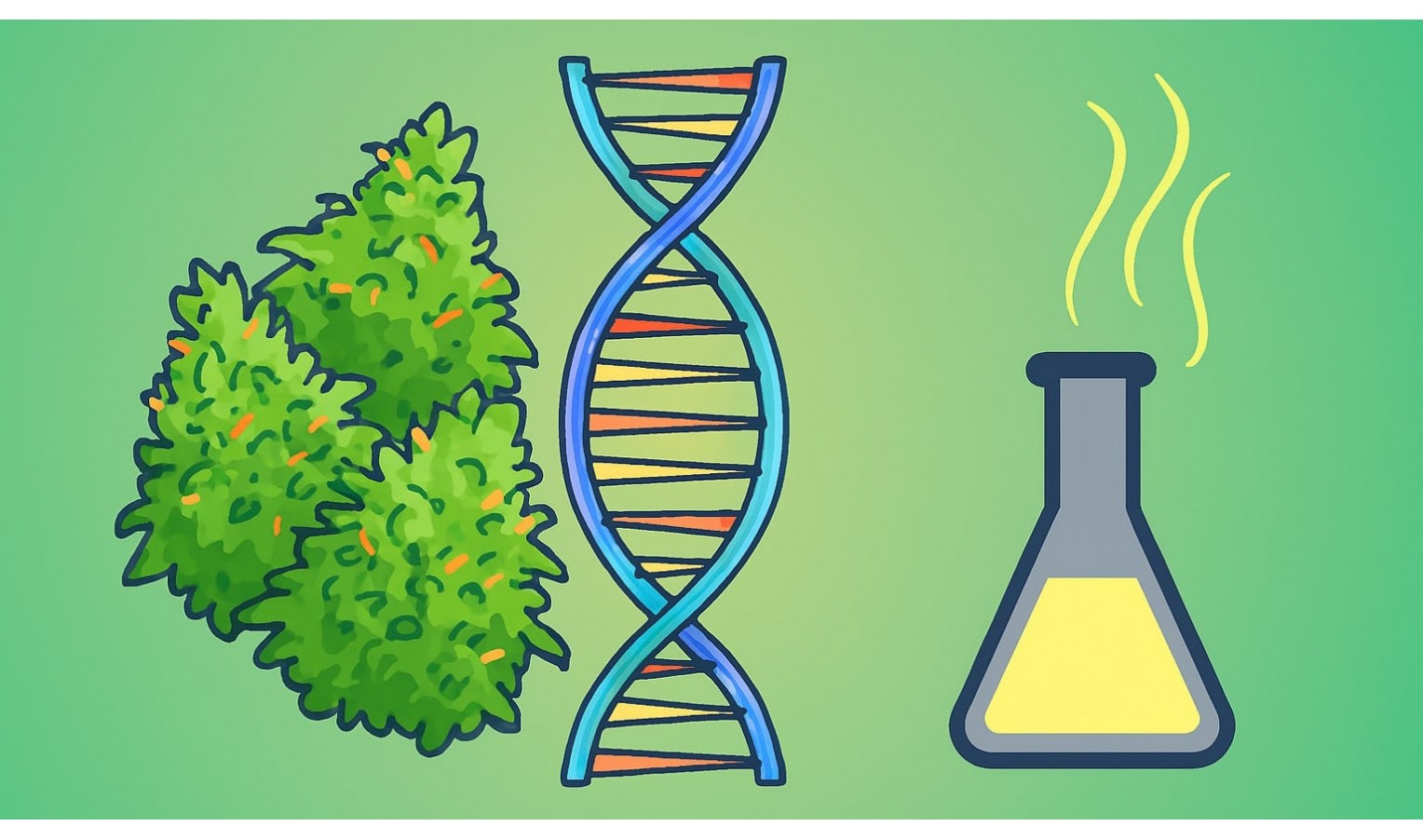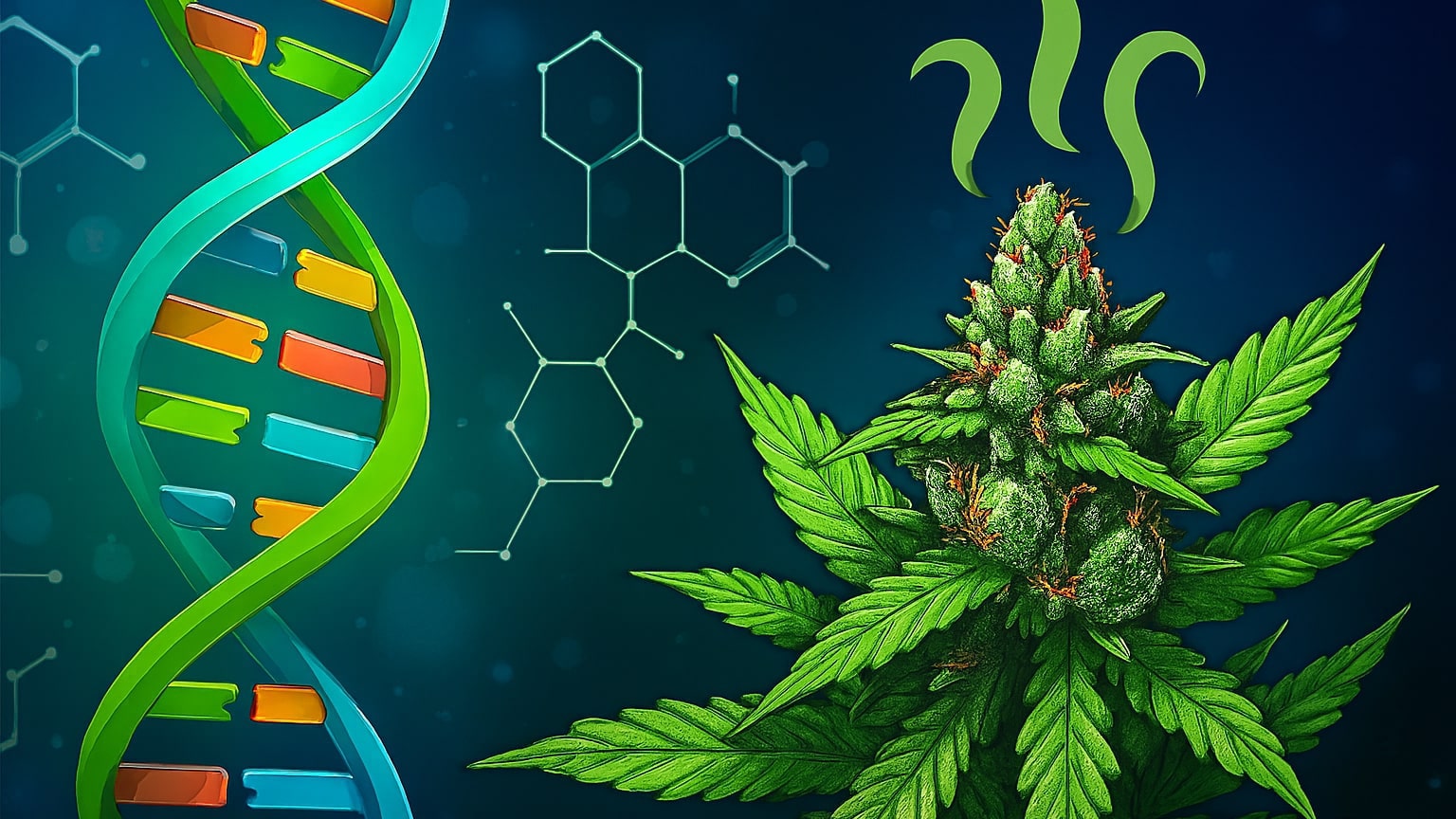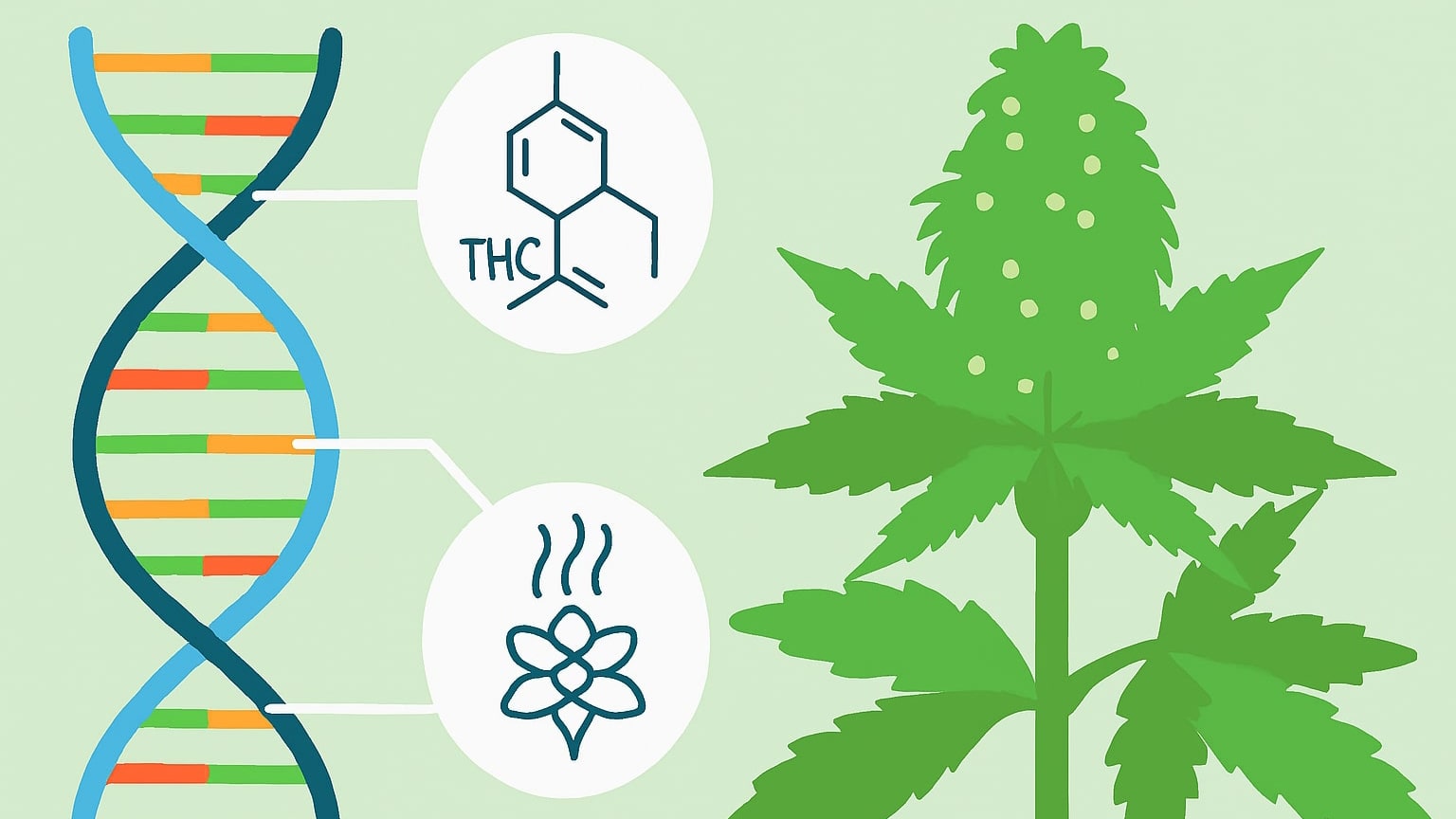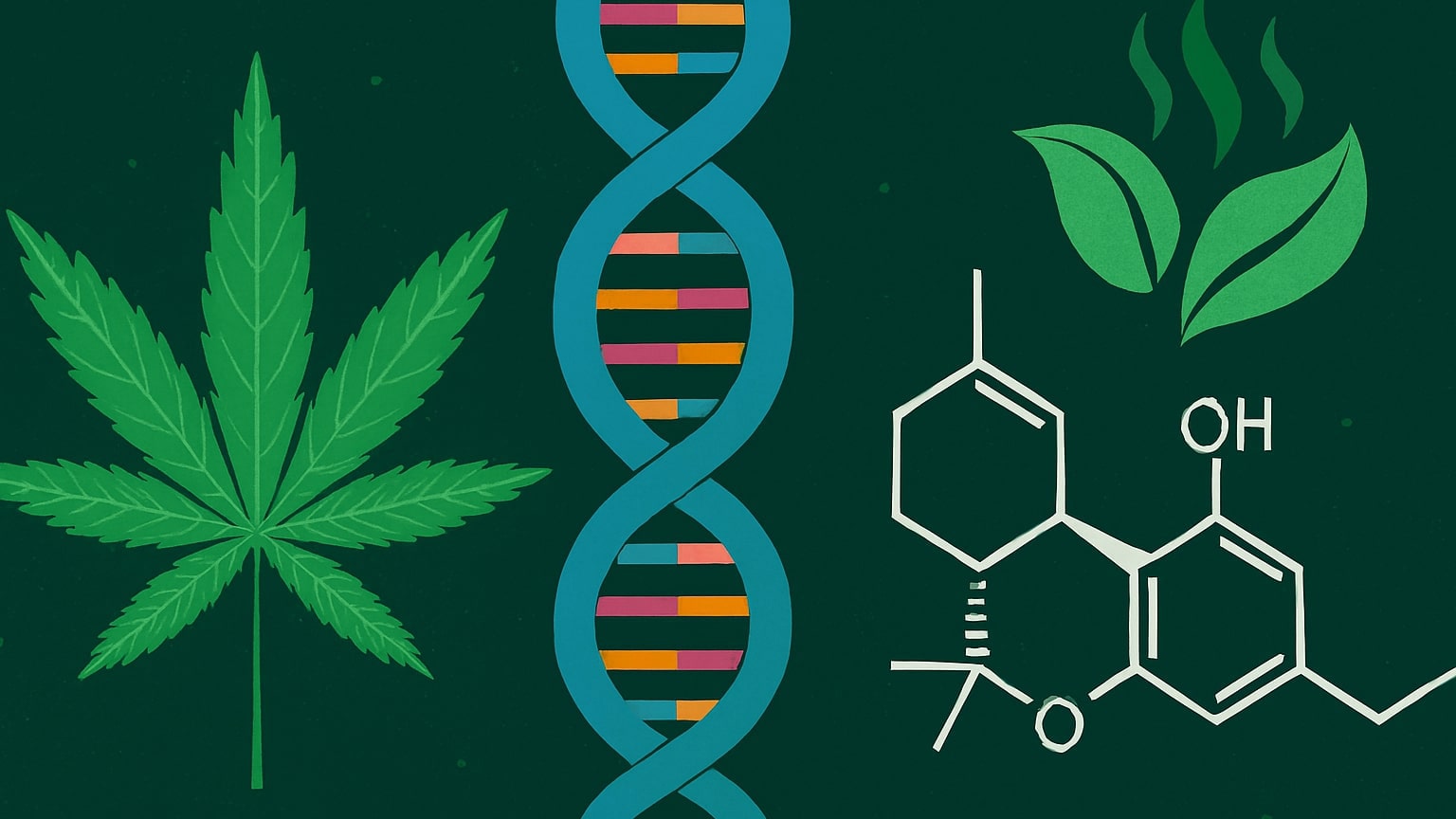0.00€
CheckoutWhich genes are responsible for THC levels and aroma?

The basics of genetics of THC content in cannabis

The concentration of tetrahydrocannabinol in a plant is the result of specific genes responsible for THC. The THCAS and CBDAS genes have the greatest influence, determining how actively the plant will synthesize the psychoactive component. When THC-level genes dominate over CBDAS, the amount of tetrahydrocannabinol increases, producing a strong effect.
However, it is important to note that even with the right genetics, the THC content depends not only on DNA but also on environmental conditions. A whole range of factors influence the regulation of THC by genes: light intensity, temperature and humidity, and fertilizer composition. If these parameters are not selected correctly, the plant may show lower than expected potential, even if its genetics are ideal for high cannabinoid levels.
In practice, biosynthetic pathways—the biosynthesis of THC genes—only work with proper cultivation, so selection and proper care always go hand in hand.
Which genes are responsible for the aroma of cannabis plants?

The smell and taste profile of cannabis is the result of the interaction of many plant aroma genes that regulate terpene synthesis. They form sweet and fruity notes as well as spicy or diesel notes. Although the focus is often on THC and cannabidiol, it is the aromatic compounds that create the unique impression of each strain.
The genes that control aromatic compounds determine which terpene pathways will be active. Depending on its genetic makeup, a plant can smell completely different. For example:
- Active limonene genes — bright citrus and refreshing taste
- Dominance of myrcene genes — earthy, grassy smell
- Pinen genes — coniferous and cold aroma
- Linalool genes — floral, lavender notes
This approach provides a better understanding of the influence of genes on plant aroma and allows genetics to be used to create stable hybrids with the desired terpene profile. As a result, it becomes possible to predict in advance what a variety will smell like, even before growing begins.
Plant aromas genetics is becoming a key element of selection: from fruit to chocolate, everything is determined by DNA and the precise tuning of genetic markers.
The influence of genes on the complex profile of a variety

Modern breeding aims not only to increase THC levels or give the plant an unusual aroma—it is important to develop a complete and predictable profile for the strain. It is the interaction of genes and THC content with aroma genes that determines the final result. Geneticists compare this process to how psilocybin's mechanism of action depends not only on the composition of the substance, but also on molecular receptors: cannabis genes also work together to create the effect, taste, and aroma.
| Direction of selection | Which genes are involved? | Result for variety |
| Increase in THC levels | THCAS, biosynthesis regulators | More potent psychoactive effects |
| Aroma formation | Genes controlling aromatic compounds | Unique flavors: citrus, diesel, berries, spices |
| Hybrid stability | Genes for trait inheritance | Stable, predictable phenotypes |
This approach helps breeders to model the future characteristics of a variety in advance: what it will taste like, how potent it will be, and how it will be received.
Today, plant aroma genetics and THC content genetics are developing rapidly—new genes affecting plant aroma are being discovered, and combinations are being tested to give hybrids special properties. The result is varieties that combine maximum flavor, potency, and medical value.
This text is for informational purposes only and does not contain instructions for cultivation. Any actions involving plants of the Cannabis genus must comply with the laws of your country/region.
